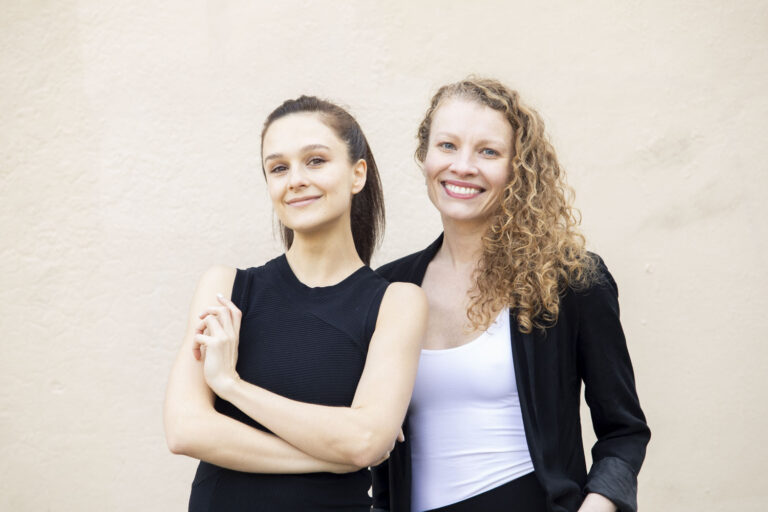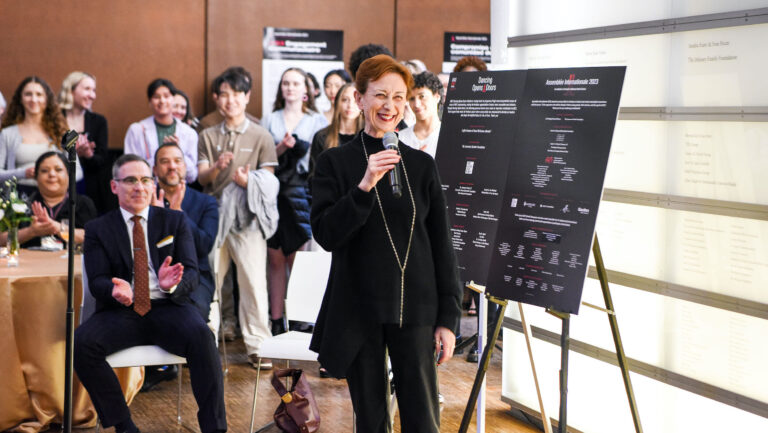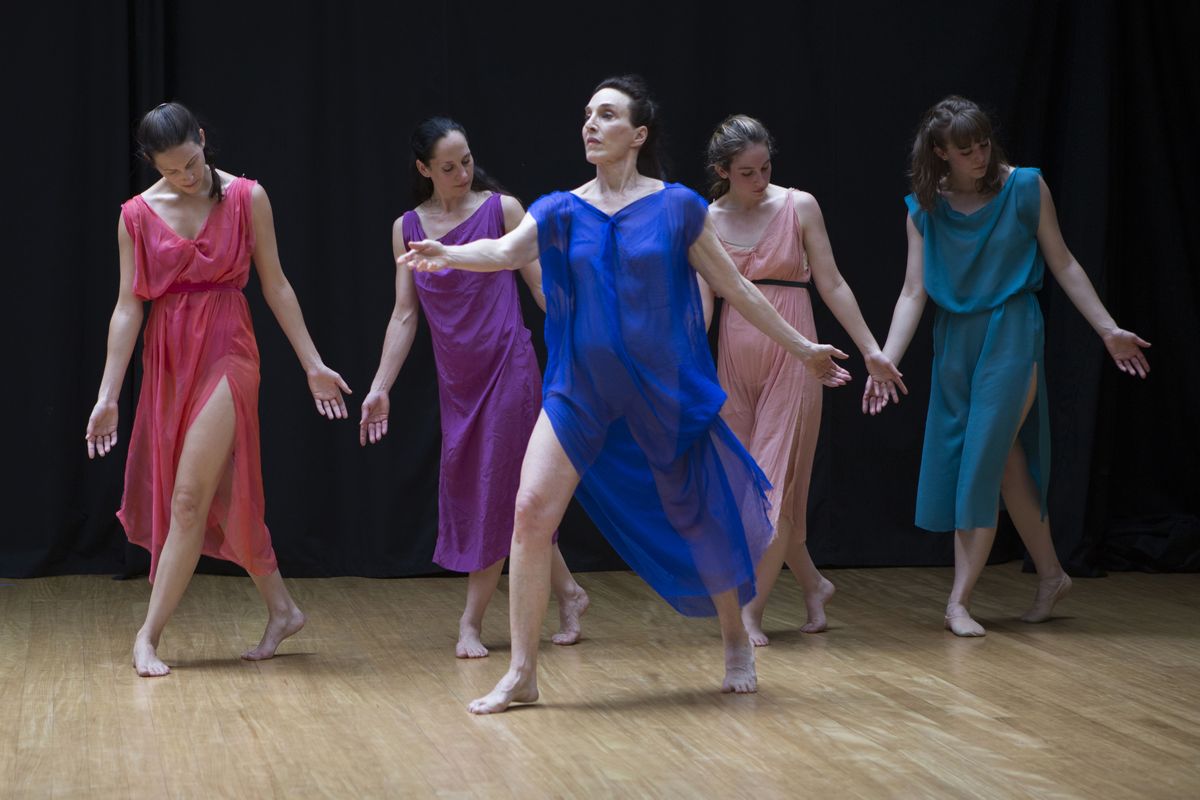
In celebration of Isadora Duncan’s 140th birthday, Lori Belilove & The Isadora Duncan Dance Company will perform at The Joyce Theater Monday, June 19 at 7:30 pm. New York City Ballet’s Sara Mearns will be featured as a guest artist.
Mearns will star in the Duncan solo Narcissus, her debut with the company. For more information about the one-time performance visit, here.
Photographer Rose Eichenbaum recently spent time with Belilove and her company. Read Eichenbaum’s experience documenting Belilove’s ongoing research and devotion to carrying on the legacy of Isadora Duncan’s work:
In 2000 I attended a concert by Lori Belilove & The Isadora Duncan Dance Company. On the program were a number of Duncan’s original dances. What a revelation to learn that they had not died with her when she was tragically killed in a 1927 automobile accident at age 50. I found Belilove’s restored Duncan works remarkable, given that there are no films of Isadora performing or written descriptions of her choreography in existence. How did she do it?
A few days later I met with Belilove at her studio, where I learned of her amazing journey to preserve the Duncan legacy. Her first 25 years of work were spent studying with two of Duncan’s adopted daughters, Irma and Anna Duncan, and her disciples Mignon Garland, Hortense Kooluris and Julia Levien, who served as a living repository of Isadora’s choreographed dances and movement technique. “Through them,” she explained, “in oral tradition, I pieced together Isadora’s body of work.”
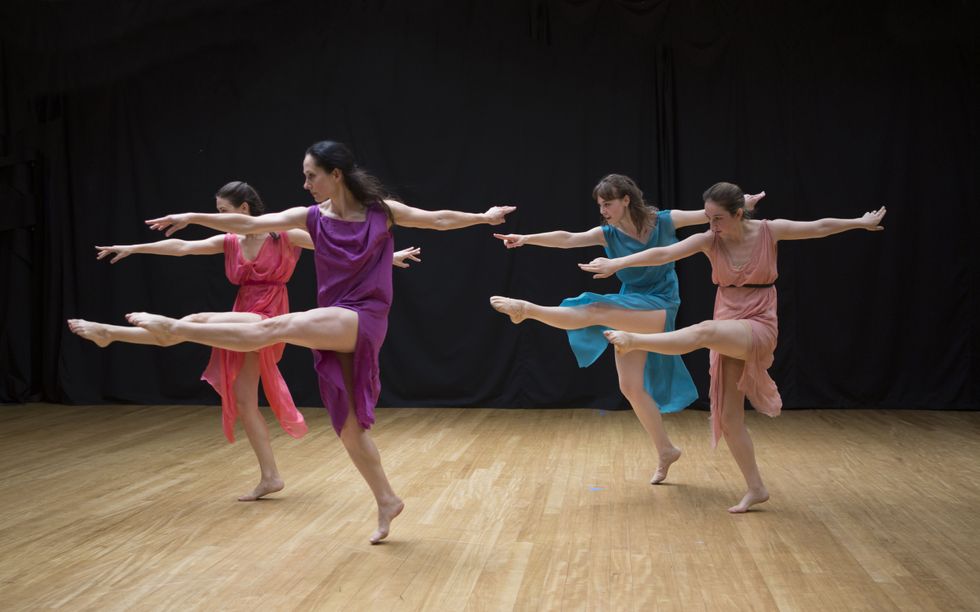 Company members rehearsing, Emily D’Angelo, Faith Kimberling, Nikki Poulos and Morgana Mellett. Photo by Eichenbaum
Company members rehearsing, Emily D’Angelo, Faith Kimberling, Nikki Poulos and Morgana Mellett. Photo by Eichenbaum
Interested in supporting Belilove’s oeuvre, I offered to photograph her dance company, document her teaching and help with her ongoing research of one of the most influential artists of the 20th century. In 2007, I accompanied her to UCLA’s Research Library to review the largest collection of Duncan materials ever assembled—more than 1,500 items. Together, we pored over boxes of Duncan’s personal belongings: never-before-seen photographs, manuscripts and letters in Duncan’s own handwriting, signed contracts for appearances in Moscow in which she made provisions protecting her rights as an artist (a radical idea at the time, especially for a woman) and emotionally wrenching letters from her former lover, Edward Gordon Craig, expressing grief over the death of their daughter, Deirdre, who drowned along with her brother and nanny when the car they were riding in drove into a river. It was here that I understood why it was so important for Lori to know as much as she could about the mother of modern dance. How else could she serve as a conduit for Isadora Duncan’s art and ideas, unless she understood the most significant events of her life and the depth of her passion?
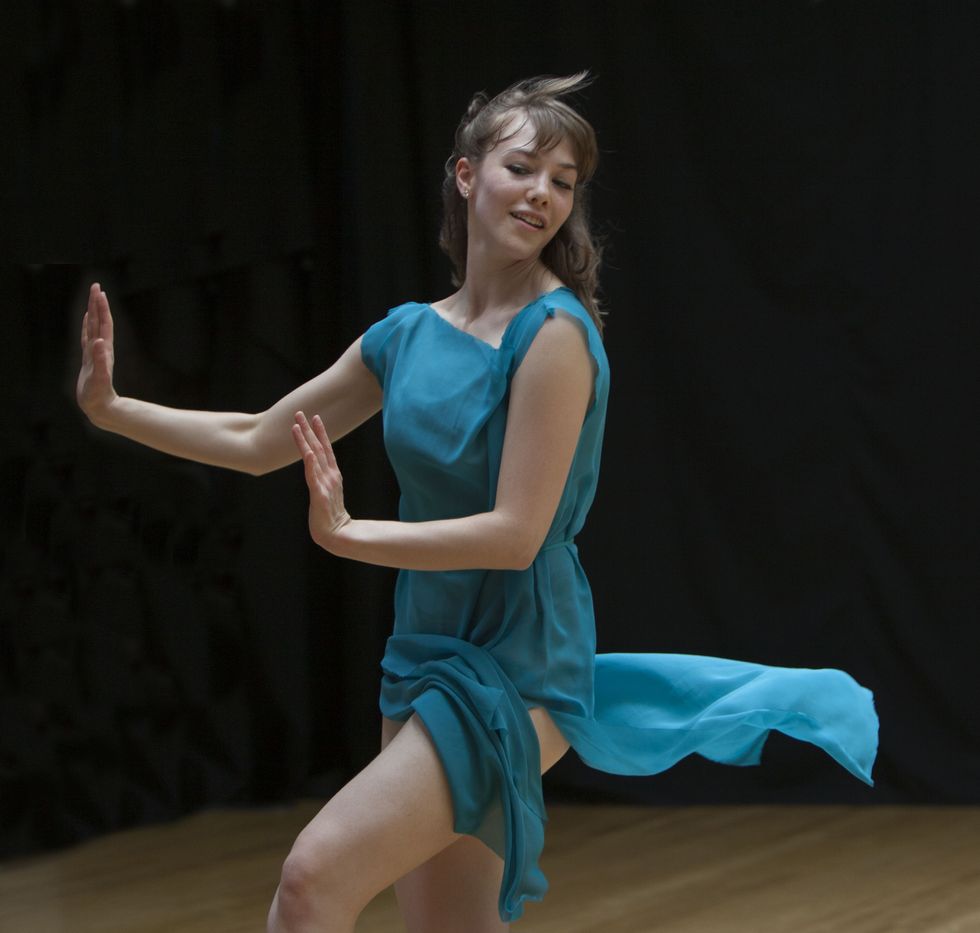 Dancer Nikki Poulos. Photo by Eichenbaum
Dancer Nikki Poulos. Photo by Eichenbaum
A Rare Spiritual Pilgrimage
In 2016, Belilove invited me to document her company’s pilgrimage to Athens, Greece—Duncan’s inspirational home. Belilove’s itinerary was designed to educate her dancers, Emily D’Angelo, Nikki Poulos, Faith Kimberling and Morgana Mellett, along with a gathering of Belilove’s international students, about Greek art and culture. The weeklong trip had us virtually stepping back in time to witness the very things that had inspired Duncan to create new movement.
 Belilove at the Temple of Poseidon. Photo by Eichenbaum
Belilove at the Temple of Poseidon. Photo by Eichenbaum
Each morning, we headed to the Isadora & Raymond Duncan Dance Research Center for company class and rehearsals. One of Athens’ most thriving art centers, it sits on the exact site where Duncan and her brother had built and designed what they called a “dream temple for the dance” in 1903. A rock wall from the original structure still remains in the main studio. Entering the studio for the first time, Belilove announced, “We’re in Isadora’s house! This space is the navel of the birth of modern dance.” It was clear that she wanted her students to be especially cognizant of this sacred environment as she guided them through Duncan’s classic moves—rising and reclining to the floor, arm movements with breath, including gestures to the heart, earth and sky, spinal ripples to set the flow of movement, followed by a plié sequence and then sways, runs, skips, leaps and partnering work.
Afternoons were spent touring historic and ancient sites, among them the Theatre of Dionysus, the Acropolis of Athens, the Temple of Olympian Zeus and the Temple of Poseidon overlooking the Aegean Sea. Some of Duncan’s best-known photographs had been taken beneath these ancient marble columns and ruins. How easy it was to imagine her standing there with us, arms outstretched, head toward the sky as if welcoming us.
Central to our pilgrimage were visits to cultural and historic museums, like the National Archaeological Museum, built in 1889 and one of the most important in the world devoted to ancient Greek art. Duncan is known to have spent hours there examining depictions of the human body in sculpture, bas-reliefs and vases, and observing how draped cloth carved into the marble and painted on the vases flowed and wrapped around human bodies while in motion. “We are looking at exactly what Isadora looked at,” Belilove explained. “This is where she found the profound simplicity of movement that moved her forward artistically toward the modernism that became her true trademark.”
In our free time, some of us visited the all-marble Panathenaic Stadium, where the opening and closing of the first modern-day Olympics was held. We strolled through the lush Zappeion in the National Gardens, where Isadora liked to take her daily walks. We ordered tea in the posh dining room of Hotel Grande Bretagne, the lavish hotel where Isadora stayed during her visits to Athens.
 National Archaeological Museum in Athens. Photo by Eichenbaum
National Archaeological Museum in Athens. Photo by Eichenbaum
Our trip coincided with the CID World Congress on Dance Research, which gave us the opportunity to engage with dance researchers from all around the world. Belilove and a few of her dancers presented a workshop, in which she taught basic movements of the Duncan vocabulary and made correlations to Greek art. With us, Meg Brooker, a former company member with an advanced certification through the Duncan Foundation, pointed out that “Isadora was way ahead of her time with regard to movement research, improvisation, connecting breath and gesture with whole-body awareness and asking questions about the body’s relationship to space, nature and music.”
Evenings were for dancing under the night sky. In beautiful restored amphitheaters like the Dora Stratou Dance Theatre, before capacity crowds, Belilove and her dancers performed selections from Duncan’s repertory, including Dance of the Furies, Dance of the Blessed Spirits and Bacchanal. Capturing the dancers’ movements, gestures, jumps, runs and skips through the camera’s lens, I couldn’t help but recall what Belilove had told me on the day we had first met: “What Isadora’s art does is feed the soul and connects us back to an honesty and authenticity of who we truly are.”
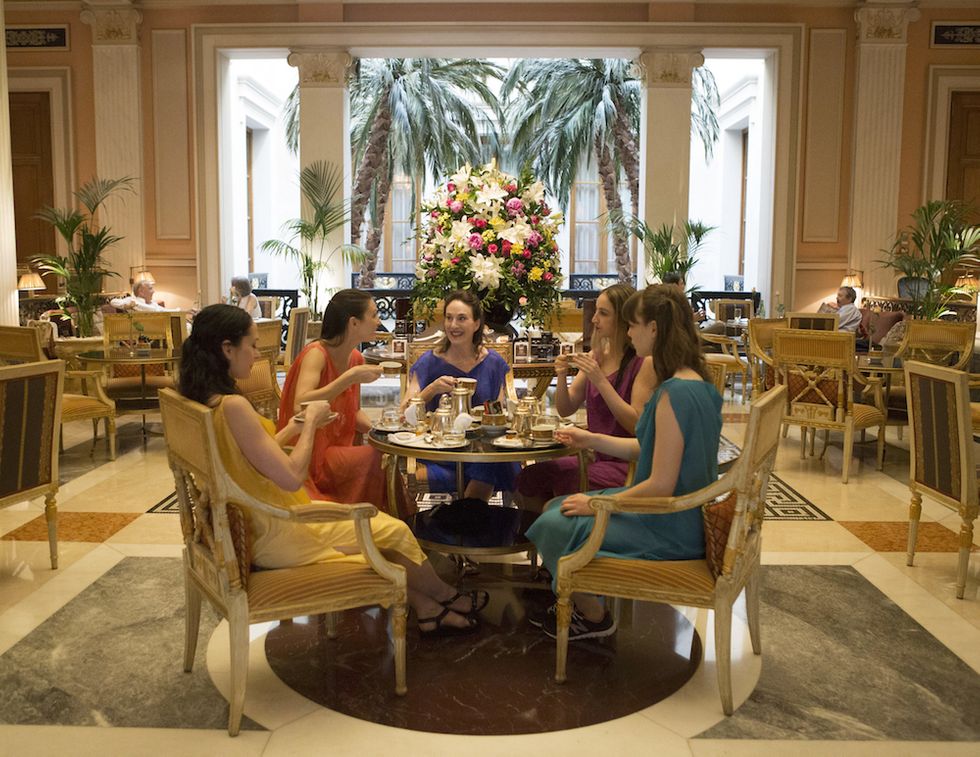 Tea at Hotel Grande Bretagne, where Isadora Duncan stayed during her visits to Athens. Photo by Eichenbaum
Tea at Hotel Grande Bretagne, where Isadora Duncan stayed during her visits to Athens. Photo by Eichenbaum


